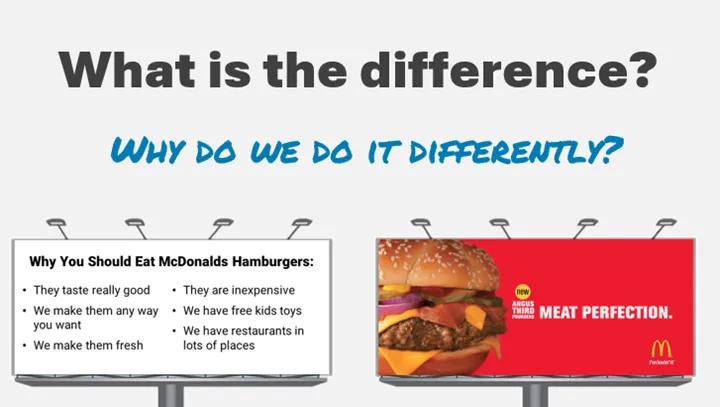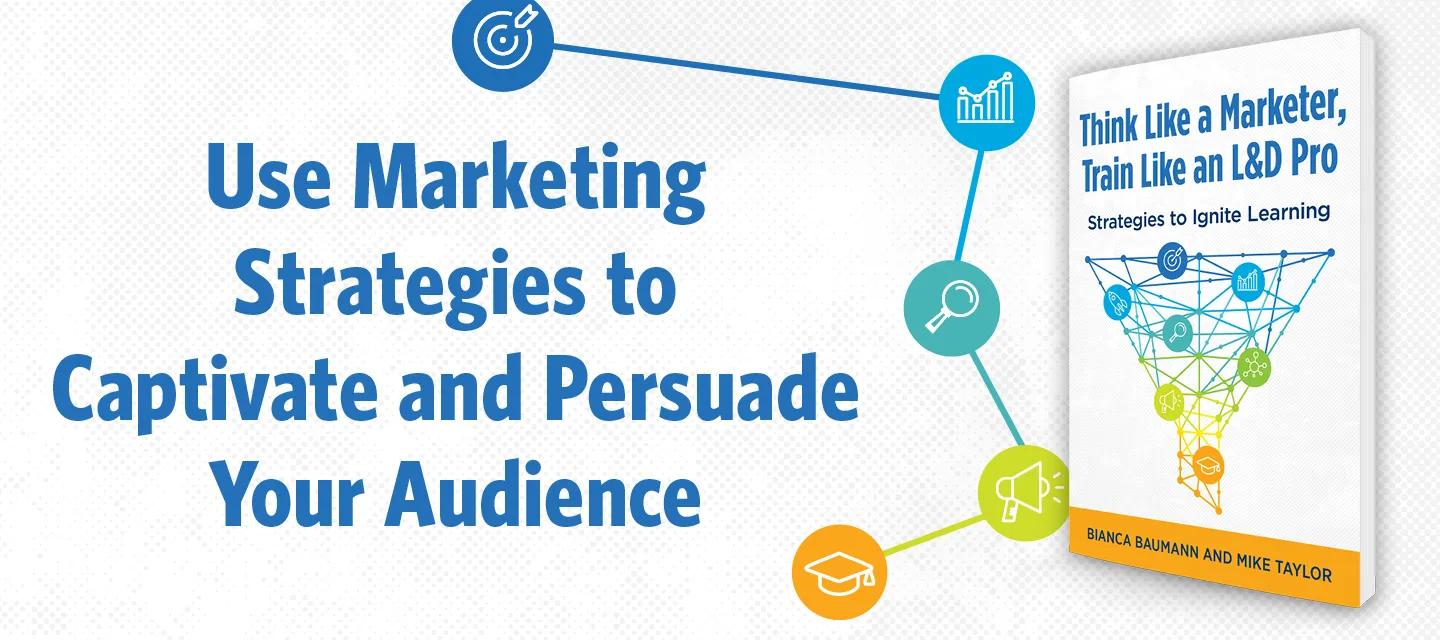ATD Blog
Think Like a Marketer: Supercharge Your L&D Programs
By borrowing from marketing’s playbook, you’re not just creating training—you’re crafting experiences that change how people think, feel, and act.
Fri May 23 2025

Want to know what effective learning programs and successful marketing campaigns have in common? They both capture attention and change behavior. While marketing and L&D might seem like distant cousins, they’re actually more like twins separated at birth—and reuniting them could transform your training impact.
The Marketing-Learning Edge
When you apply marketing strategies to learning programs, you create experiences that drive lasting change. Marketing excels at understanding audiences, crafting compelling messages, and measuring real impact. These same strengths can revolutionize your L&D approach.
Consider the difference between these two approaches:

Used with permission. © McDonalds
On one billboard, we see a bullet-pointed list of hamburger features: “They taste really good,” “We make them fresh,” and “We have free kids toys.”
On the second billboard, we see a mouth-watering image of a perfectly stacked burger against a bold red background with two simple words: “MEAT PERFECTION.”
Which makes you hungry? The first approach resembles how many organizations design training: information-heavy, feature-focused, and frankly, boring. The second approach shows the marketing mindset at work—emotional, benefit-focused, and impossible to ignore.
Know Your Audience, Nail Your Message
Marketing pros don’t guess what their audience wants—they know. Their secret weapon? Personas—detailed profiles of typical users that capture goals, challenges, and behaviors based on research and data.
Start with solid personas that reflect your learner segments, such as geographic areas or job roles. Consider role responsibilities, daily challenges, career goals, and preferred learning methods. Once personas are created, use them as your starting point for design.
By applying this data-driven approach to L&D, you can transform how you design and deliver training. It ensures your content is relevant and resonates with your audience. Knowing your learners’ goals and challenges allows you to tailor your messaging to address their specific needs, increasing engagement and retention.
Three Techniques to Transform Your Training Today
1. Write for Impact
Turn dense content into clear, actionable guidance. Replace walls of text with scannable layouts. Structure learning materials with clear hierarchies and highlight key points. Focus on:
Chunking complex information into digestible sections
Using clear headings and subheadings to guide readers
Highlighting key takeaways and action items
Providing real-world examples that demonstrate application
2. Create Emotional Connections
Facts tell, but stories sell. Turn dry content into engaging narratives that highlight real-world impact. Incorporate authentic scenarios that resonate with your workplace culture and connect learning goals to personal and organizational values. When learners can see themselves in the story, they’re far more likely to engage with and embrace the message.
3. Build Learning Campaigns
Move beyond one-time training sessions to create sustained campaigns that foster awareness and drive long-term behavior change. Leverage various content types and channels, including email reminders, team challenges, quick-reference tools, and peer learning networks, to keep the message engaging and meaningful. Monitor engagement closely to refine timing and delivery methods for maximum effectiveness.
Campaign Your Way to Success
By designing training as ongoing campaigns, you reinforce key messages through multiple content types and channels—videos, workshops, and interactive tools. This approach ensures concepts stick not just during assessment but in daily decision making.
Here’s how to transform key training topics into engaging learning experiences:
Skills development: Build awareness through ongoing micro-lessons and real-world scenarios.
Leadership principles: Use storytelling to demonstrate effective management in action.
Technical training: Transform complex procedures into engaging learning journeys.
Transform Your Training Impact
In a world full of distractions and competing priorities, capturing your learners’ attention is a challenge. By adopting a marketer’s mindset, you can design learning experiences that not only engage but also inspire meaningful behavior change. The outcome? Learning programs that achieve meaningful results for your organization.
Ready to Take Action?
Start small. Choose one upcoming learning program and apply just one marketing technique. Notice the difference in engagement. Then try another technique. Before long, you’ll build a marketing-inspired approach to L&D that consistently delivers results.
Remember, great marketers don’t just inform—they inspire and influence. Isn’t that exactly what we’re trying to do in L&D? By borrowing from marketing’s playbook, you’re not just creating training—you’re crafting experiences that change how people think, feel, and act.
Looking to explore marketing strategies for L&D? Learn more at trainlikeamarketer.com.

